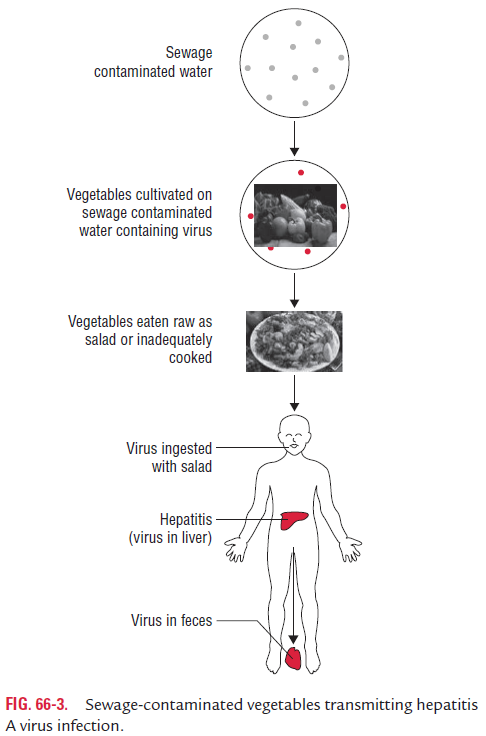Chapter: Microbiology and Immunology: Virology, Virus: Arboviruses
Epidemiology - Hepatitis A Virus
Epidemiology
Nearly two-thirds of acute cases of hepatitis are caused by HAV.
◗ Geographical distribution
Hepatitis A virus infection is common in the developing coun-tries of Asia, Africa, and Central and South America. High preva-lence of HAV infection has been documented in the Middle East.
◗ Reservoir, source, and transmission of infection
Humans are the reservoirs for HAV. Humans infected with HAV are the important source of infection. The virus is excreted in the stool during the first 2 weeks of infection, prior to the onset of symptoms; hence the quarantine of patients is not useful. The infected children and adults appear to be noninfectious after the appearance of jaundice.
Contaminated food or water is the main source of infection. Wide outbreak can occur from a single contaminated source, such as uncooked vegetables, infected shellfish, and contami-nated food and water (Fig. 66-3).

Infection with HAV occurs throughout the world but is more common in developing countries, in the areas of low socioeconomic status and poor sanitation. International travelers to areas endemic for HAV, drug addicts using injectable drugs, and homosexual men are at high risk for HAV infection. Close contacts of infected individuals are also at high risk. Infection is not transmitted from infected mother to neonates. Secondary infection occurs at a high rate in household contacts of acute HAV (20%).
Related Topics